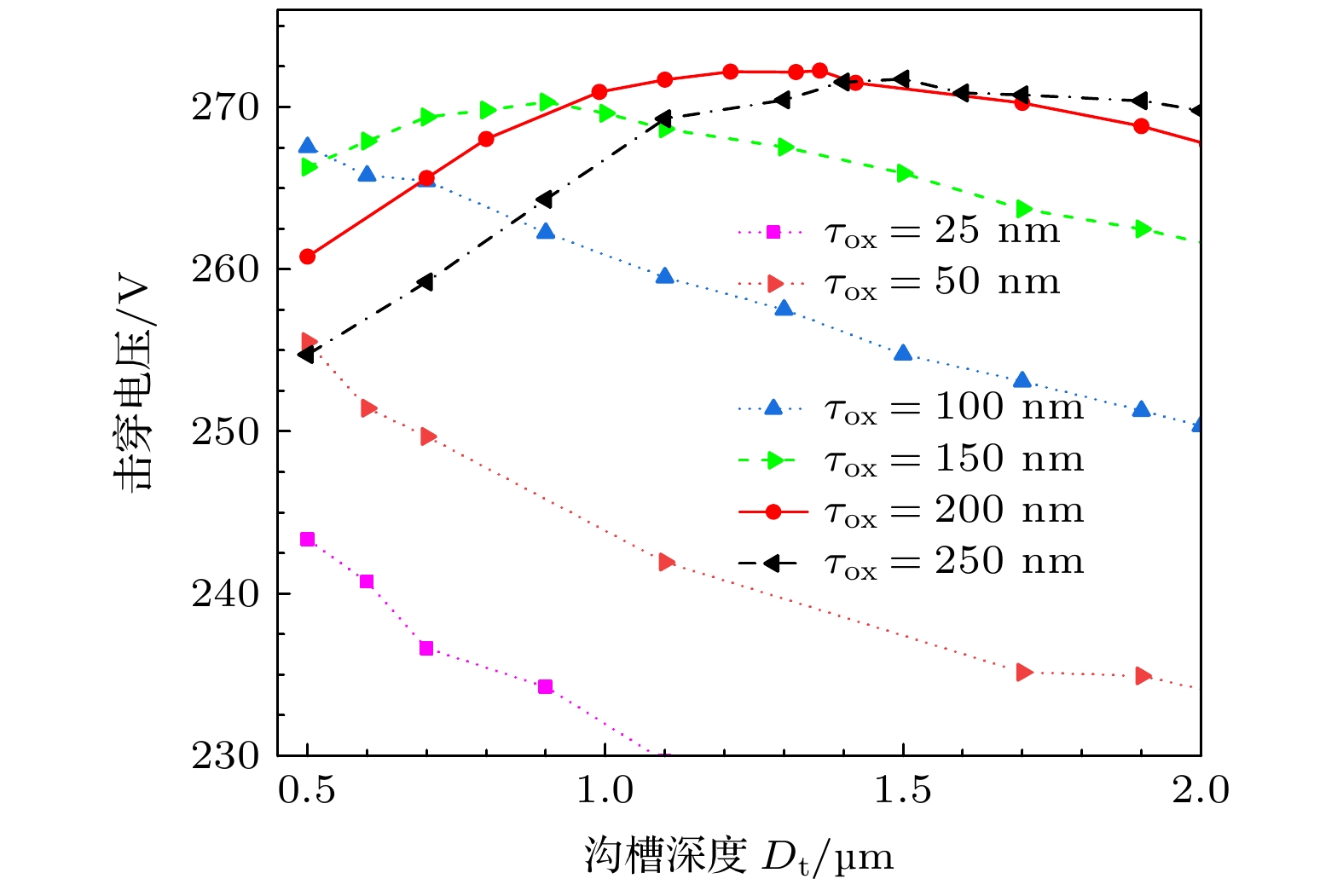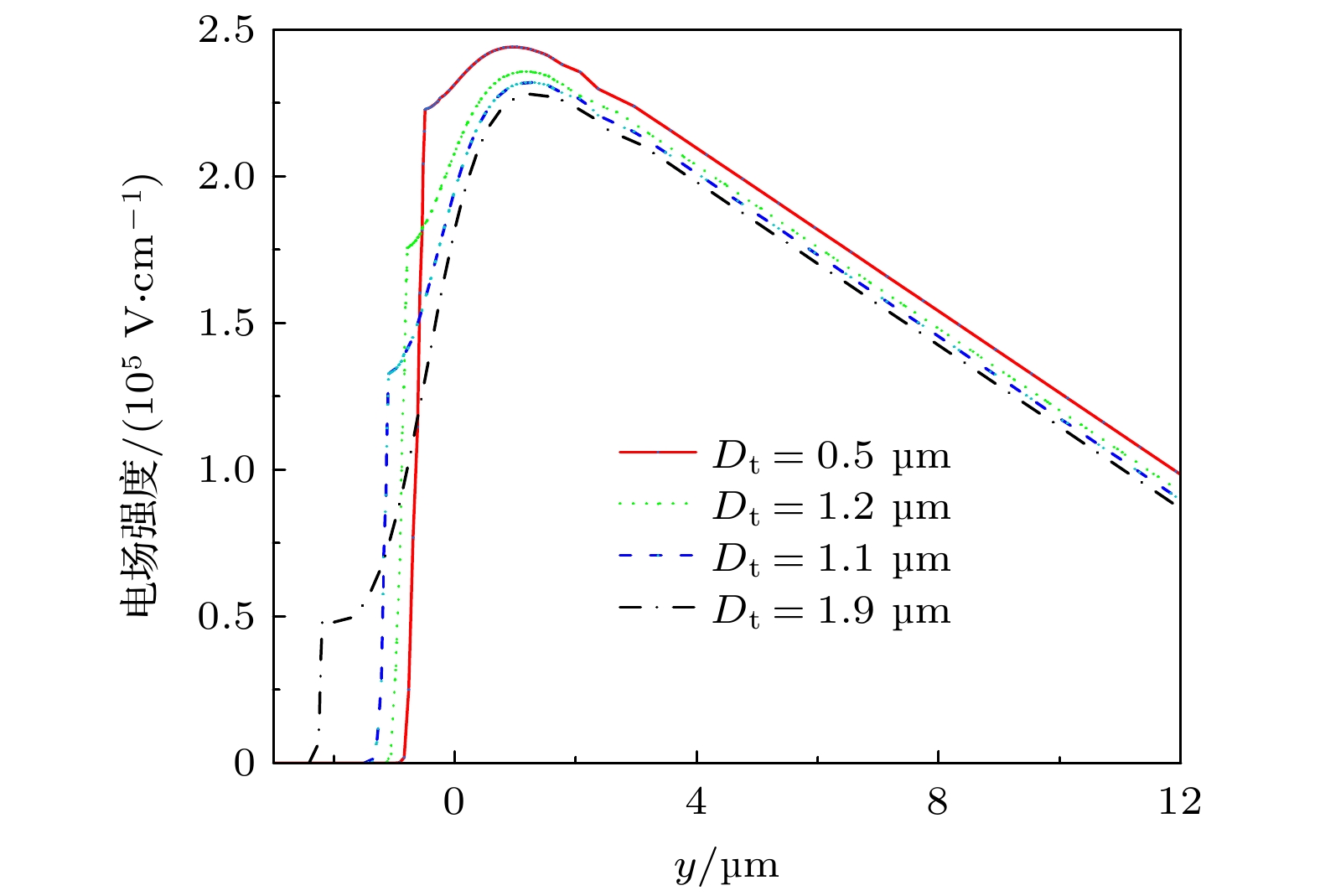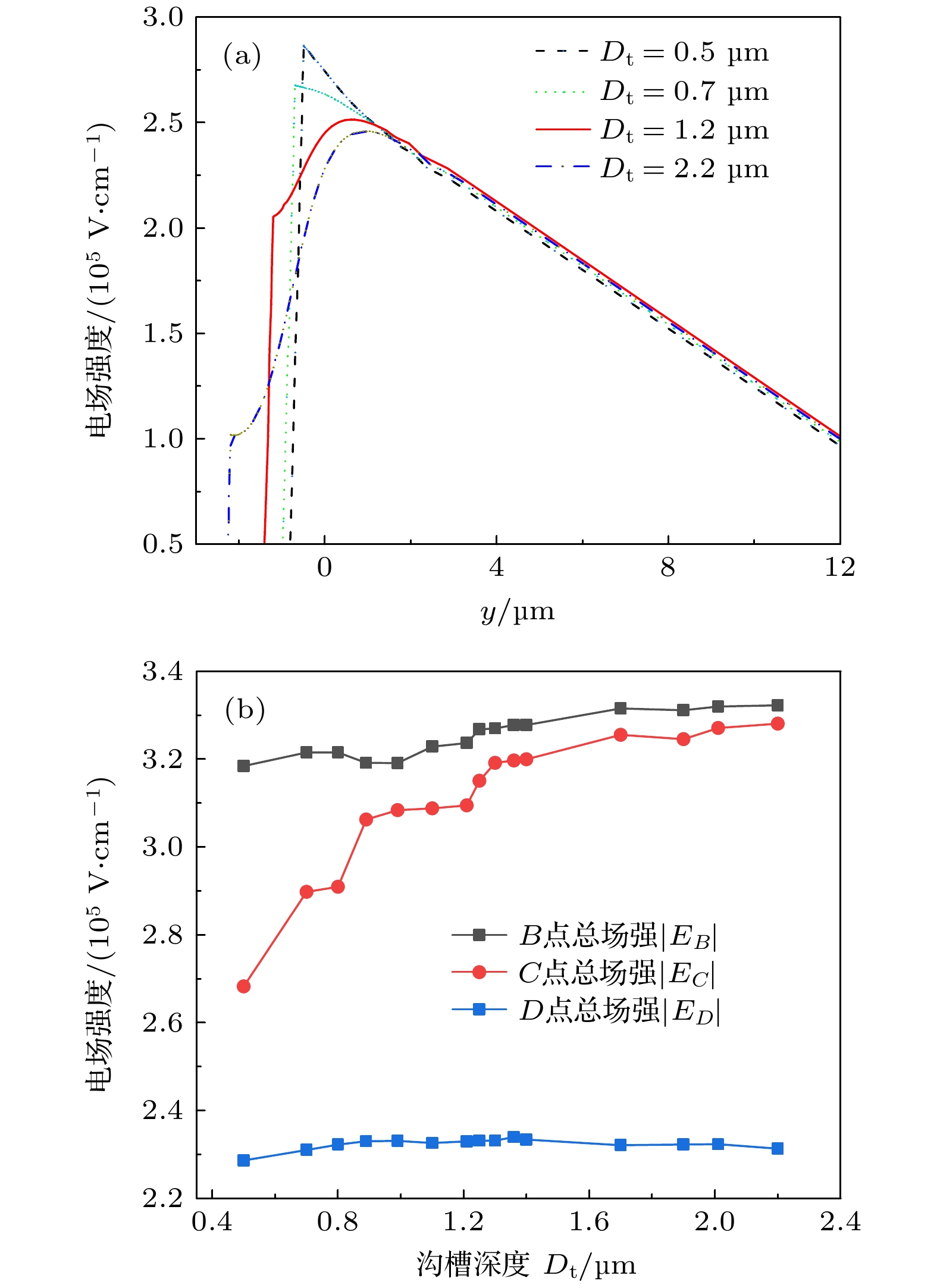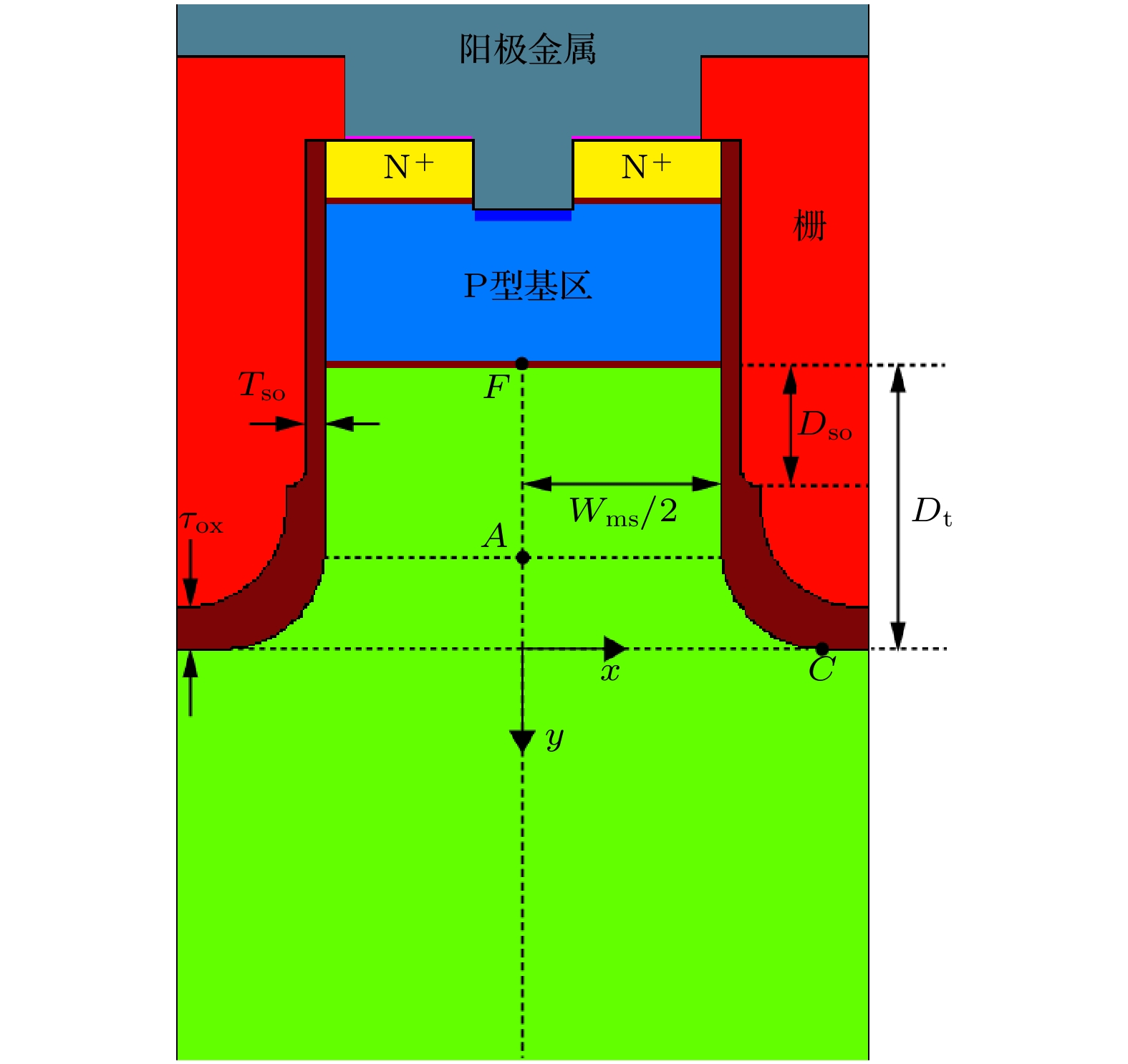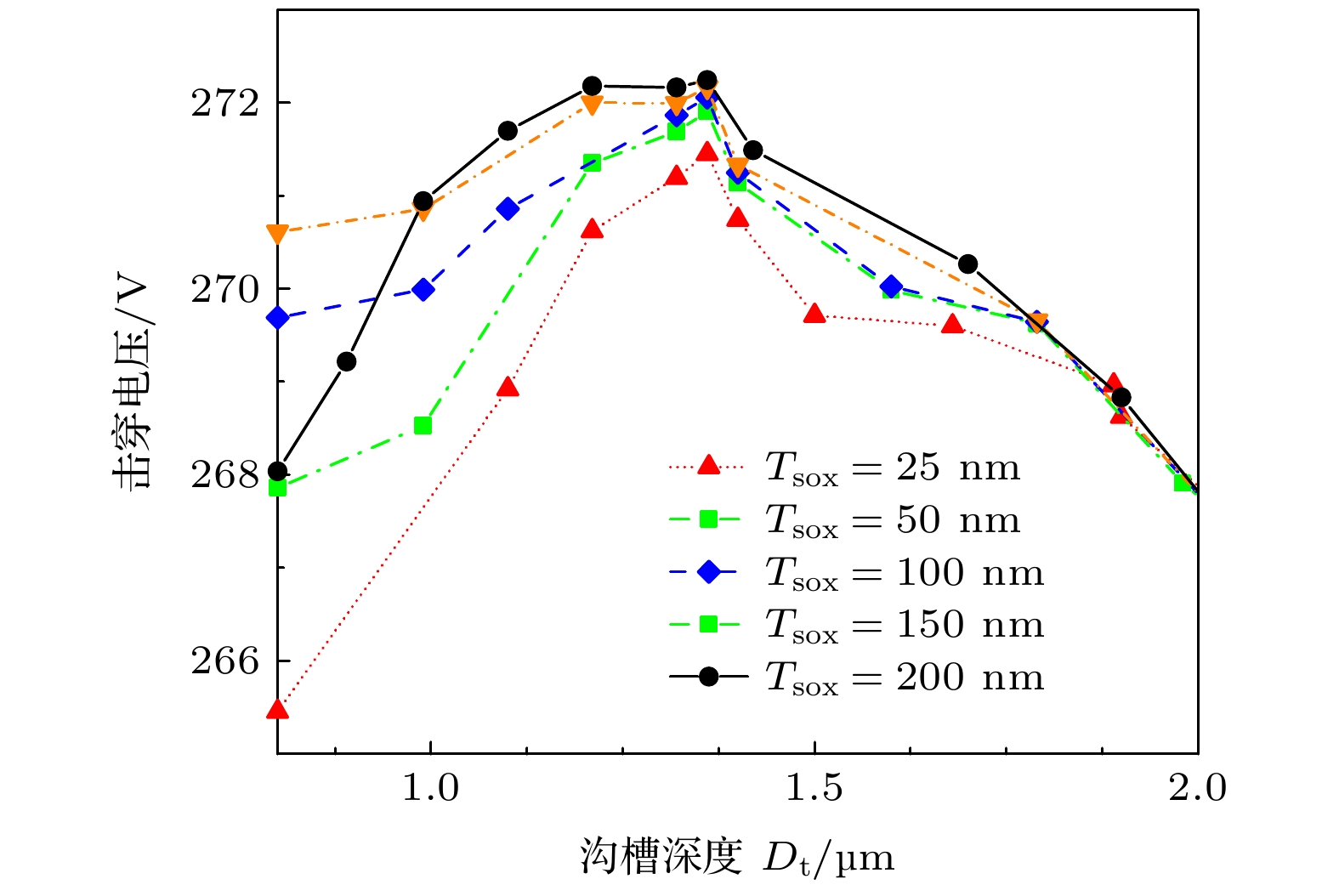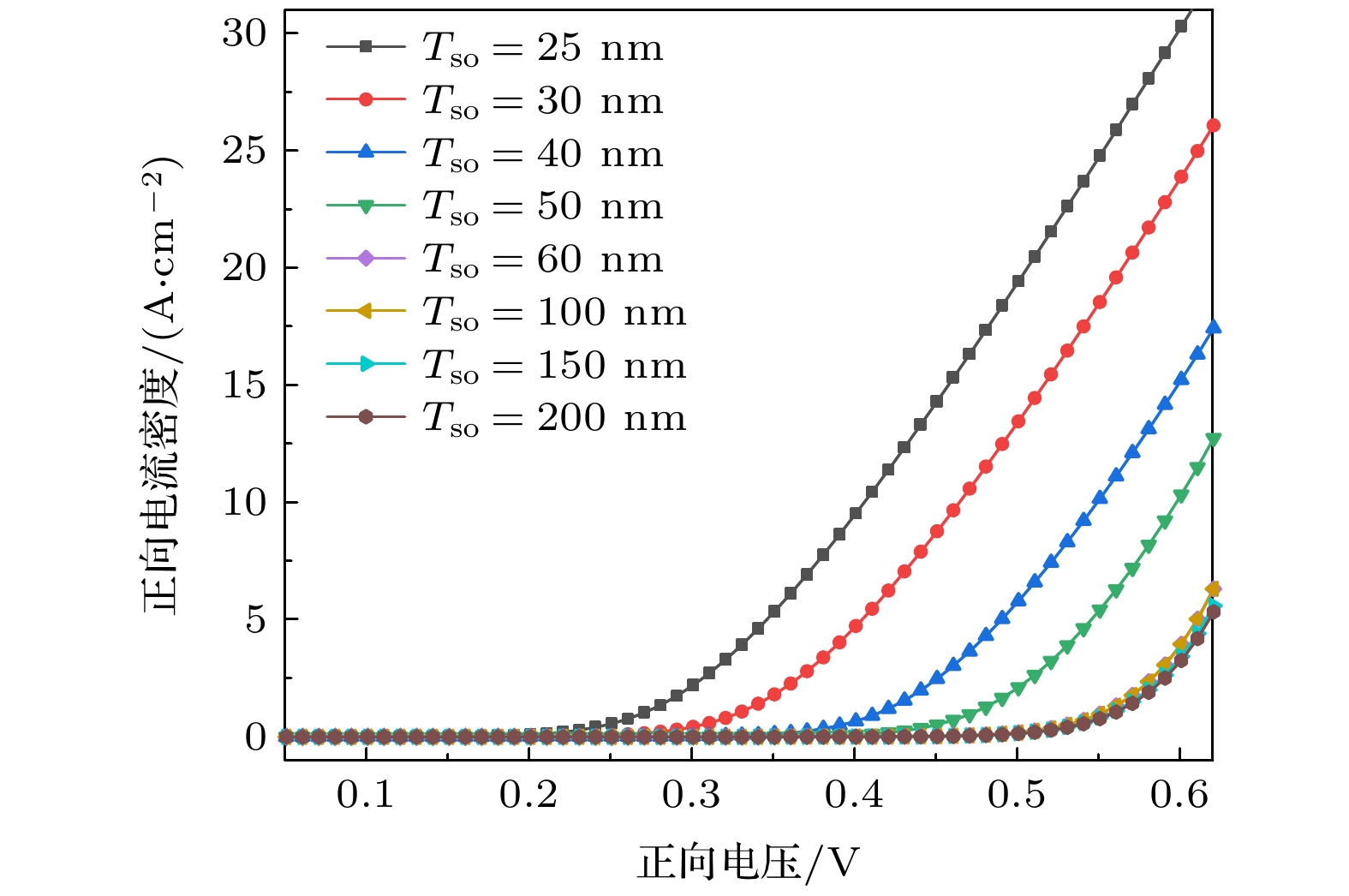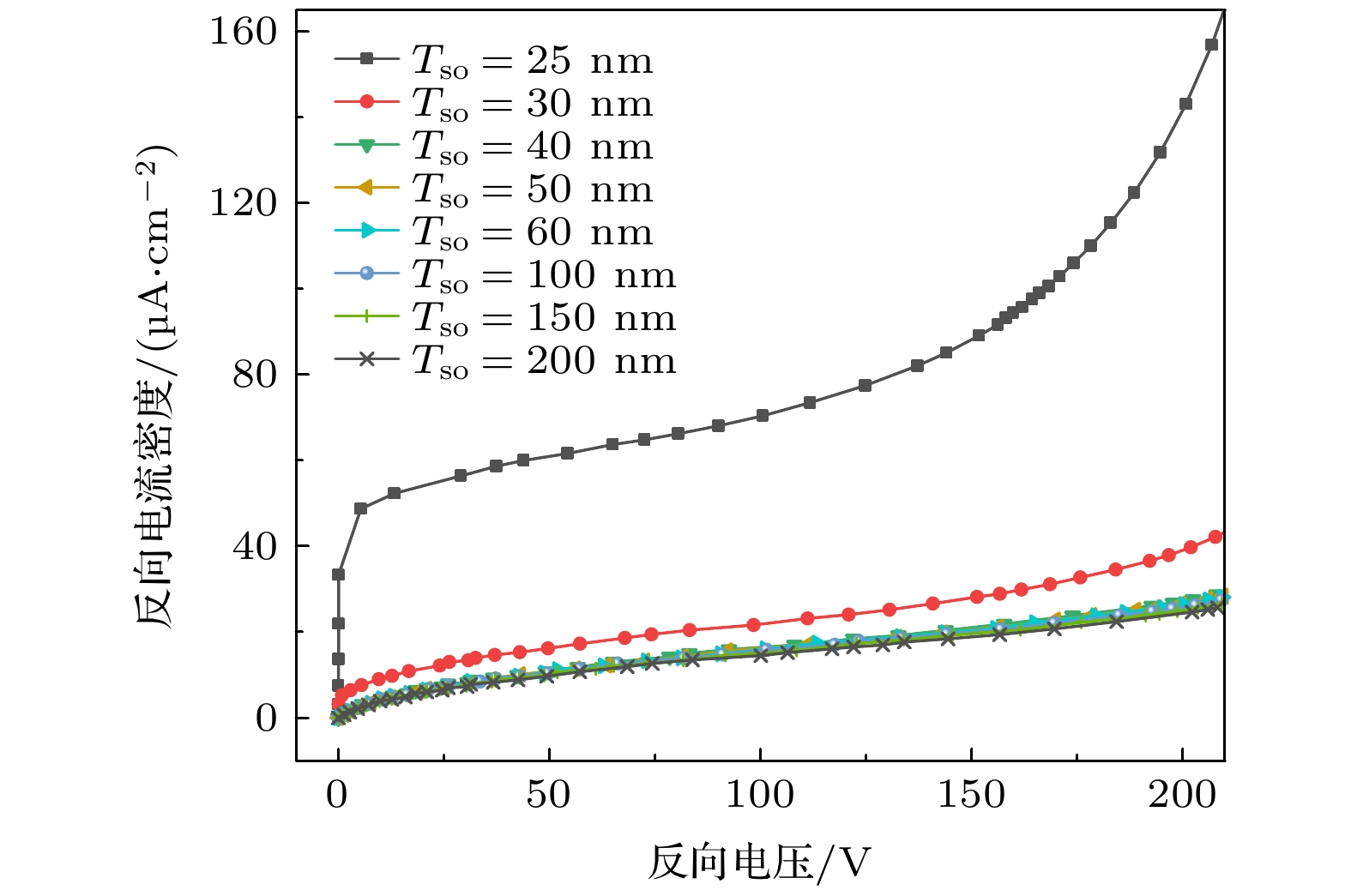-
通过沟槽结构和可调节的电子势垒, 沟槽栅极超势垒整流器可以更为有效地实现通态压降和反向漏电流之间的良好折衷. 在高压应用时, 电荷耦合效应对于提高该器件的反向承压能力起到了关键作用. 本文通过理论模型与器件模拟结果, 分析了沟槽深度、栅氧厚度和台面宽度等关键参数对电荷耦合作用下二维电场分布的影响, 归纳出了提高该器件击穿电压的思路与方法, 为器件设计提供了有意义的指导. 在此基础上, 提出了阶梯栅氧结构, 该结构在维持几乎相同击穿电压的同时, 使正向导通压降降低51.49%.
-
关键词:
- 沟槽栅极超势垒整流器 /
- 电荷耦合效应 /
- 击穿电压 /
- 阶梯栅氧
With the rapidly increasing demands pertaining to high voltage applications in modern power electronic systems, power devices have become widely used in today’s power applications. As a major carrier device without unreliable metal-semiconductor Schottky contact, super barrier rectifier (SBR) has been one of promising substitutions for traditional diodes since it was first introduced, owing to its excellent performance and reliability. The main principle behind SBR approach is to create an adjustable potential barrier in the MOS channel. The height of this barrier can be easily adjusted by the doping concentration in the channel and by the oxide thickness. Trench-gate-type SBR (TSBR) with a trench gate is so designed that the junction-type field-effect transistor effect of planar gate structure enables TSBR to be eliminated to have ultralow forward voltages and a good tradeoff between the forward voltages and reverse leakage currents. However, the charge coupling effect under reverse bias, which is usually neglected and not intensively studied, plays an important role in determining the breakdown voltage of TSBR for high voltage applications (above 200 V). In this paper, the two-dimensional electric field distribution influenced by the charge coupling effect is explained and verified by the analytical model and device simulations with TCAD software Sentaurus. Adjusting the key parameters including the trench depth, oxide thickness and mesa width can improve the tradeoff between the forward voltage drops and breakdown voltages. The optimization of key parameters can provide the significant guidance for designing the device structure. Furthermore, some considerations for designing the TSBRs are discussed in this paper. In addition, a novel TSBR with the stepped oxide structure (SO-TSBR) is proposed and demonstrated. Similar to, yet different from, the stepped oxide structure for dual trench MOSFET, the stepped oxide design equipped with this new rectifier possesses the ability to enhance the forward conduction. As indicated by the simulation results, the SO-TSBR reduces the forward voltage drop by 51.49% at a forward current density of 2.5 A/cm2 compared with the normal structure of TSBR, with almost the same breakdown voltage of 270 V. The optimized TSBRs and SO-TSBRs are very promising rectifiers that can be used in high power electronic systems, because their breakdown voltages are both greater than 250 V.-
Keywords:
- trench-gate-type super barrier rectifier /
- charge coupling /
- breakdown voltage /
- stepped oxide
[1] Rodov V, Ankoudinov A L, Ghosh P 2007 Solid-State Electron. 51 714
 Google Scholar
Google Scholar
[2] Rodov V, Ankoudinov A L, Taufik T 2007 APEC 07-Twenty-Second Annual IEEE Applied Power Electronics Conference and Exposition Anaheim, USA, February 25–March 1, 2007 p1053
[3] Rodov V, Ankoudinov A L, Taufik 2008 IEEE Trans. Ind. Appl. 44 234
 Google Scholar
Google Scholar
[4] [5] Taufik T, McCarthy M, Watkins S, Anwari M 2009 IEEE Region 10 International Conference TENCON Singapore, January 23–26, 2009 p1
[6] Chen W S, Zhang P J, Zhong Y, Tan K Z, Liao R J, Zeng Z 2017 IEEE Electron Device Lett. 38 244
 Google Scholar
Google Scholar
[7] Chen W S, Liao R J, Zeng Z, Zhang P J, Zhong Y, Tan K Z, Chen H, Zhang Bo 2017 IEEE Electron Device Lett. 38 902
 Google Scholar
Google Scholar
[8] Rodov V, Hsueh W Y W, Chang P, Lin C, Chern M 2001 US Patent 6 331 455
[9] Chang P, Rodov V, Chern G C, Lin C, Chiang C L 2002 US Patent 6 420 225
[10] Chang P, Chern G C, Hsueh W Y W, Rodov V, Lin C 2004 US Patent 6 765 264
[11] Lizio F 2015 US Patent 9 018 048
[12] Ankoudinov A, Rodov V 2015 US Patent 9 012 954
[13] Shen J 2013 CN Patent 103 400 840
[14] Shen J 2014 CN Patent 103 887 308
[15] Chen Q, Hu W, Huang Y L 2016 CN Patent 106 098 686
[16] Chen W S, Liao R J, Zhang P J, Zeng Z, Zhang B 2018 IEEE Trans. Electron Devices 65 215
 Google Scholar
Google Scholar
[17] Mehrotra M, Baliga B J 1995 Solid-State Electron. 38 801
 Google Scholar
Google Scholar
[18] 陈星弼 2008 电力电子技术 42 2
 Google Scholar
Google Scholar
Chen X B 2008 Power Electron. 42 2
 Google Scholar
Google Scholar
[19] Baliga B J 2018 Fundamentals of Power Semiconductor Devices (Switzerland: Springer International Publishing AG) p290
[20] Baliga B J 2009 Advanced Power Rectifier Concepts (New York: Springer Science Business Media) p119
[21] Merchant S 1999 IEEE Trans. Electron. Devices 46 6
 Google Scholar
Google Scholar
[22] Park C, Azam M, Dengel G, Shibib A, Terrill K 2019 31st International Symposium on Power Semiconductor Devices and ICs (ISPSD) Shanghai, China, May 19–23, 2019 p95
-
-
[1] Rodov V, Ankoudinov A L, Ghosh P 2007 Solid-State Electron. 51 714
 Google Scholar
Google Scholar
[2] Rodov V, Ankoudinov A L, Taufik T 2007 APEC 07-Twenty-Second Annual IEEE Applied Power Electronics Conference and Exposition Anaheim, USA, February 25–March 1, 2007 p1053
[3] Rodov V, Ankoudinov A L, Taufik 2008 IEEE Trans. Ind. Appl. 44 234
 Google Scholar
Google Scholar
[4] [5] Taufik T, McCarthy M, Watkins S, Anwari M 2009 IEEE Region 10 International Conference TENCON Singapore, January 23–26, 2009 p1
[6] Chen W S, Zhang P J, Zhong Y, Tan K Z, Liao R J, Zeng Z 2017 IEEE Electron Device Lett. 38 244
 Google Scholar
Google Scholar
[7] Chen W S, Liao R J, Zeng Z, Zhang P J, Zhong Y, Tan K Z, Chen H, Zhang Bo 2017 IEEE Electron Device Lett. 38 902
 Google Scholar
Google Scholar
[8] Rodov V, Hsueh W Y W, Chang P, Lin C, Chern M 2001 US Patent 6 331 455
[9] Chang P, Rodov V, Chern G C, Lin C, Chiang C L 2002 US Patent 6 420 225
[10] Chang P, Chern G C, Hsueh W Y W, Rodov V, Lin C 2004 US Patent 6 765 264
[11] Lizio F 2015 US Patent 9 018 048
[12] Ankoudinov A, Rodov V 2015 US Patent 9 012 954
[13] Shen J 2013 CN Patent 103 400 840
[14] Shen J 2014 CN Patent 103 887 308
[15] Chen Q, Hu W, Huang Y L 2016 CN Patent 106 098 686
[16] Chen W S, Liao R J, Zhang P J, Zeng Z, Zhang B 2018 IEEE Trans. Electron Devices 65 215
 Google Scholar
Google Scholar
[17] Mehrotra M, Baliga B J 1995 Solid-State Electron. 38 801
 Google Scholar
Google Scholar
[18] 陈星弼 2008 电力电子技术 42 2
 Google Scholar
Google Scholar
Chen X B 2008 Power Electron. 42 2
 Google Scholar
Google Scholar
[19] Baliga B J 2018 Fundamentals of Power Semiconductor Devices (Switzerland: Springer International Publishing AG) p290
[20] Baliga B J 2009 Advanced Power Rectifier Concepts (New York: Springer Science Business Media) p119
[21] Merchant S 1999 IEEE Trans. Electron. Devices 46 6
 Google Scholar
Google Scholar
[22] Park C, Azam M, Dengel G, Shibib A, Terrill K 2019 31st International Symposium on Power Semiconductor Devices and ICs (ISPSD) Shanghai, China, May 19–23, 2019 p95
计量
- 文章访问数: 9438
- PDF下载量: 111
- 被引次数: 0













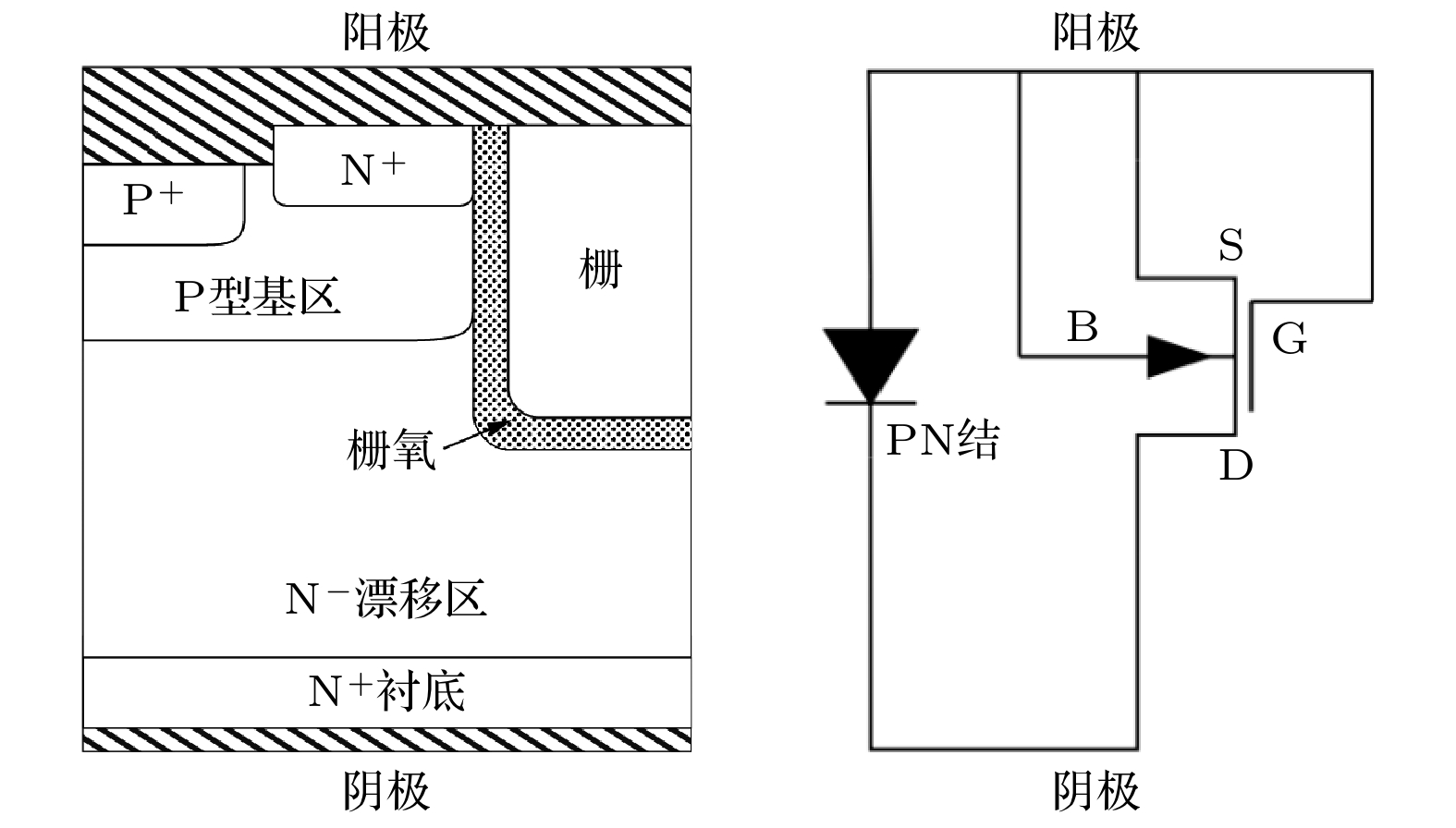
 下载:
下载:

